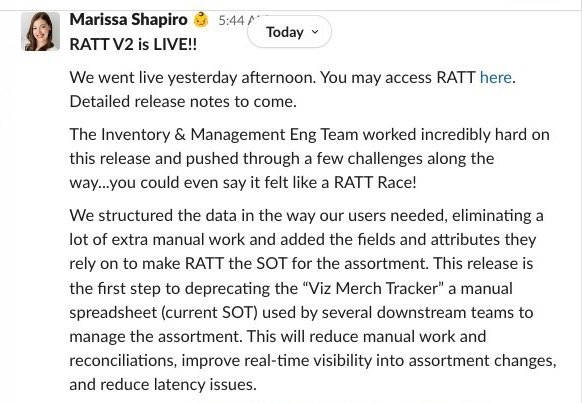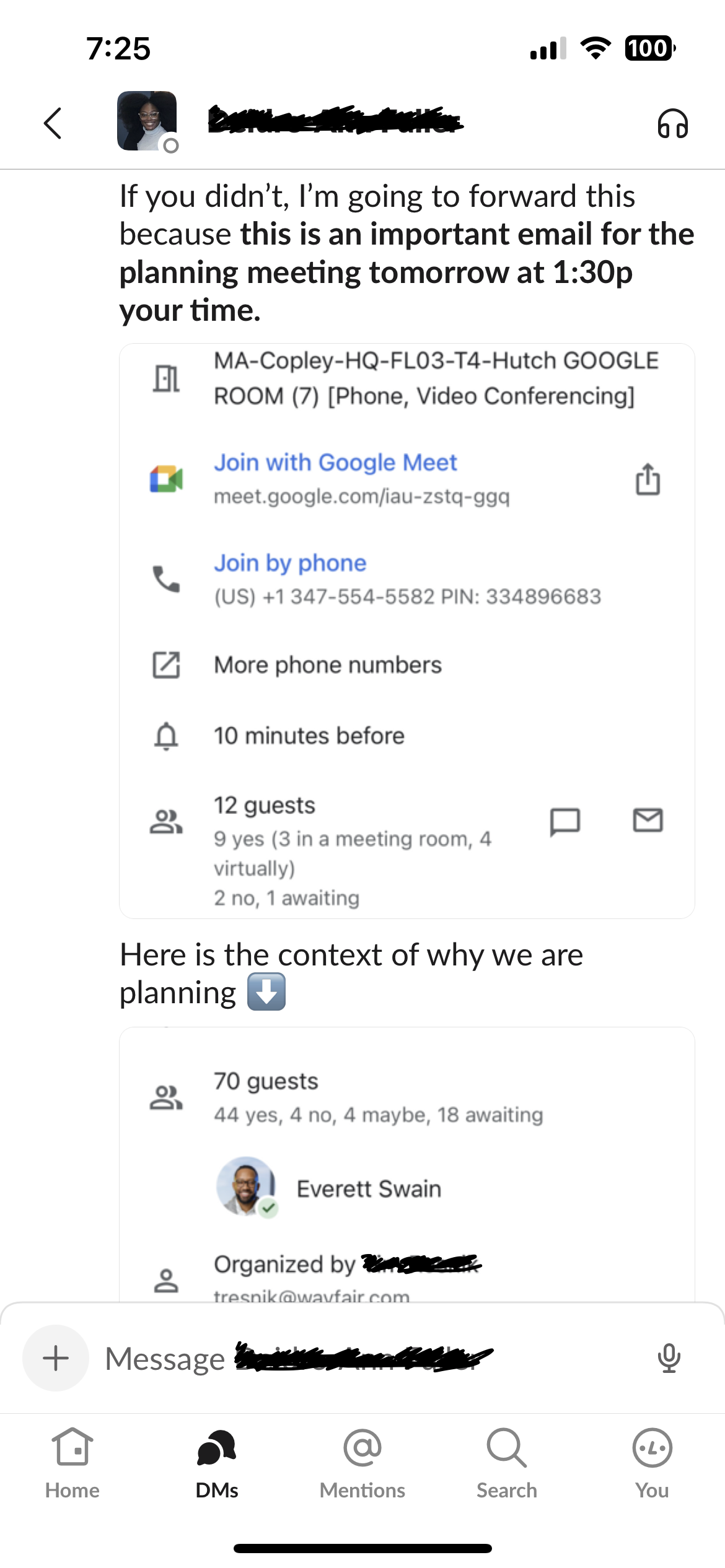Wayfair
B2B, GXD APPRENTICESHIP, ARC
2021-2023
Retail Assortment Tagging Tool (RATT)
Approach
The Retail Assortment Tagging Tool (RATT) allows Merchants, Physical Retail Merchant Ops, Planning and Allocation, Visual Merchandising, and Physical Retail Ops the ability to manage assorting, tagging, and updating data specific to products sold in physical retail stores.
RATT 1.0 was launched as a way to add retail-specific attributes to items and assign them to stores. RATT 2.0 focuses on being an all-in-one platform combining Product Information Management and Assortment Management.
RATT 2.0’s enhancements allow real-time assortment management and a source of truth for the product assortment in AllModern, Joss & Main, and Wayfair US physical retail stores.
Problems
Limited visibility into key product attributes hinders downstream teams, as they lack access to crucial metadata and cannot use RATT as a real-time source of truth.
Manual assortment management with numerous Google sheets leads to disjointed processes between teams.
High latency and error-prone practices without real-time data further increase the time spent on tasks, negatively impacting productivity.
Goals
To be the source of truth for Product Assortment intended to be sold in Physical Retail Stores.
To provide real-time insight as an all-in-one Product Information Management and Assortment Management.
To reduce latency issues and streamline the product assortment process for downstream teams.
Reduce single-store bulk upload time for up to 400 SKUs by at least 2 hours.
EXPERIENCE DESIGN
EXPERIENCE DESIGN
Wayfair practices both Design Thinking and Lean UX with a robust design system.
As a result, Experience Designers (XDs) customize project templates to adjust to project needs.
Wayfair XDs focus on product strategy and functionality delivering mockups, and prototypes.
The enhancements implemented in RATT 2.0 were executed using Lean UX Methodology.
Manual Assortment using List management means a manual disjointed assortment management process of updating Google Sheets with tens of sheets with thousands of products.
RATT’s core functionality centers around Product Management, Season Management, and My Jobs allow teams to asynchronously update inside of RATT.
Users now have the ability to add new sets or individual product offerings intended to be sold in Wayfair and Specialty Retail brands (SRBs) physical retail stores in bulk or individually into RATT.
Adding the ability to perform bulk actions, improved filter usability, and data export allows downstream teams to asynchronously update information inside of RATT.
Launch codes are to product offerings what date of birth is to a person in that, they represent when product offerings first launch within a given store.
Season codes are to product offerings what birthdays are to a person in that, they represent a point in time product offerings are promoted within physical retail stores.
Outcomes
GXD Apprenticeship Program
Approach
I was appointed to own Wayfair’s inaugural GXD Apprenticeship Program. Wayfair’s 7th apprenticeship program offered was piloted to maintain a world-class Experience Design team by building a strong entry-level talent pipeline.
Problems
Wayfair faced two primary challenges: fulfilling its GXD DEI (Global Experience Design Diversity, Equity, and Inclusion) commitments and addressing attrition.
Goals
80% FTE Conversion
Build entry-level pipeline
Allow for L2 and L3 XDs an opportunity to grow into leadership
APPRENTICESHIP PROGRAM
APPRENTICESHIP PROGRAM
Wayfair sponsored a 50-week paid on-the-job experience training program for five participants.
We joined forces with Apprenti and General Assembly to expand and strengthen our talent pipeline.
We created a buddy system that pairs each apprentice with an L3 mentor to provide support.
Weekly and bi-weekly check-ins provide multiple interactions to track their improvement.
App Reusable Components (ARC) Team
Approach
The App Reusable Components (ARC) Team was created as the counterpart to the Core Capabilities (CoCo)Team as an initiative to speed the workflow of the designer by creating reusable components for specific experiences and to complete a re-platforming effort to Block Builder, allowing pods to create and manage UI/Copy content they own within device experiences.
Problems
ARC and CoCo were new teams with growing pains in pod rituals and delivery efficiencies of enormous re-platforming efforts as physical retail stores were launching simultaneously. While XDs in pods use HomeBase Design System, there were inconsistencies growing in the execution of HomeBase.
Goals
Evaluate, enhance, and rebuild all App experiences into reusable components for Wayfair XDs
Collaborate with Engineering to design the BlocBuilder widget experience to be utilized by each individual pod

























